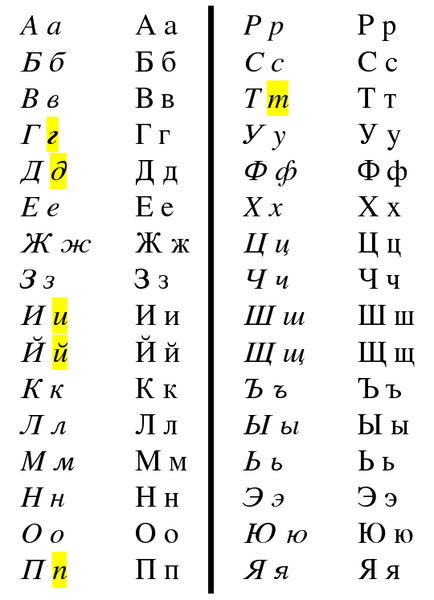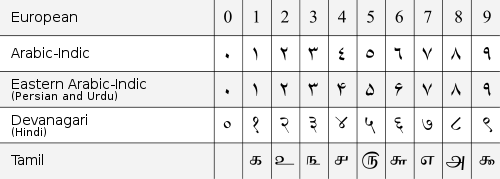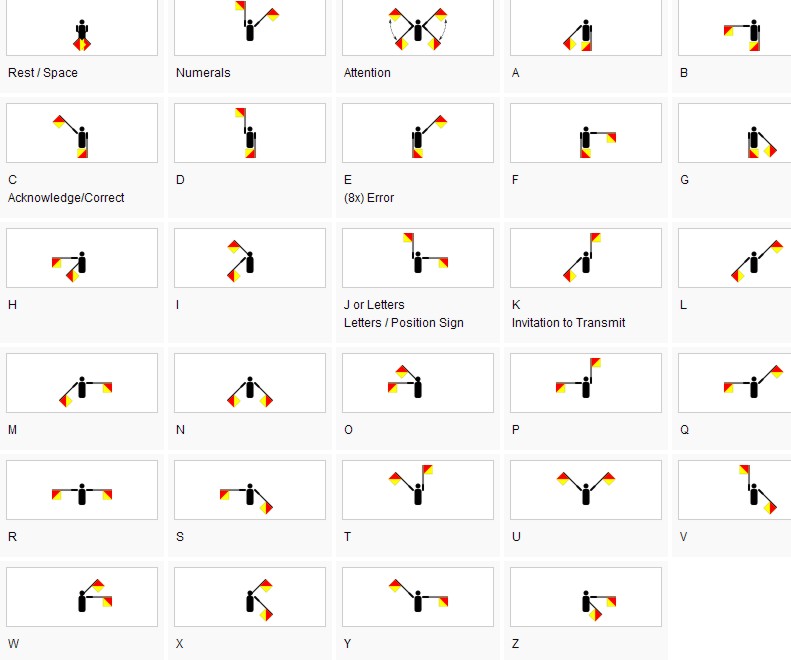Petrophysical Training
Licenses
|
 IT'S ALL GREEK TO ME
IT'S ALL GREEK TO ME
The Greek alphabet is widely used in science to
represent variables in equations. The alphabet
was developed by scholars around 900 BC. Computer
programming languages
don't accept Greek symbols, so this Handbook
does not use them either. Computers can, of
course, accept
Greek letters from Greek configured keyboards,
using Unicode 4.1, and print Greek text, but I
am not aware of a computer program language that
can accept Greek letters in equations or
remarks.
Morse Code Alphabet 
The tables below shows the capital and
small letters for several common alphabets that
may be found in oil field documents, reports,
and well logs, along with their English language
names, Roman alphabet equivalent, and the numeric value assigned to each
letter for counting purposes (from
Wikipedia).
|
MODERN
GREEK |
|
Α α |
Alpha |
1 |
|
Β β |
Beta |
2 |
|
Γ γ |
Gamma |
3 |
|
Δ δ |
Delta |
4 |
|
Ε ε |
Epsilon |
5 |
|
Ζ ζ |
Zeta |
7 |
|
Η η |
Eta |
8 |
|
Θ θ |
Theta |
9 |
|
Ι ι |
Iota |
10 |
|
Κ κ |
Kappa |
20 |
|
Λ λ |
Lambda |
30 |
|
Μ μ |
Mu |
40 |
|
Ν ν |
Nu |
50 |
|
Ξ ξ |
Xi |
60 |
|
Ο ο |
Omicron |
70 |
|
Π π |
Pi |
80 |
|
Ρ ρ |
Rho |
100 |
|
Σ σ ς |
Sigma |
200 |
|
Τ τ |
Tau |
300 |
|
Υ υ |
Upsilon |
400 |
|
Φ φ |
Phi |
500 |
|
Χ χ |
Chi |
600 |
|
Ψ ψ |
Psi |
700 |
|
Ω ω |
Omega |
800 |
|
|
|
|
A awning |
 |
R r-r-rolled
|
|
B bit |
S see |
|
V vine |
T tip |
|
G go |
OO boot |
|
D do |
F face |
|
YE yet, YO yolk |
CH chi |
|
ZH jeux |
TS sits |
|
Z zoo |
CH chip |
|
I in |
SH shoe |
|
Y yes |
SH she |
|
K kit |
J edge |
|
L lamp |
I sill |
|
M map |
J just |
|
N not |
E met |
|
O ore |
U use |
|
P pet |
YA yard |
|
|
MODERN ARABIC |
|
Isolated |
End |
Middle |
Beginning |
|
|
|
ا |
ـﺎ |
ـﺎ |
ا |
alif |
' ,
ā |
|
ﺏ |
ـب |
ـبـ |
بـ |
bā |
b |
|
ﺕ |
ـت |
ـتـ |
تـ |
tā |
t |
|
ﺙ |
ـث |
ـثـ |
ثـ |
tha |
f |
|
ﺝ |
ـج |
ـجـ |
جـ |
gīm |
j, g |
|
ﺡ |
ـح |
ـحـ |
حـ |
hā |
h |
|
ﺥ |
ـخ |
ـخـ |
خـ |
hā |
h, kh, x |
|
ﺩ |
ـد |
ـد |
د |
dāl |
d |
|
ﺫ |
ـذ |
ـذ |
ذ |
dāl |
d, dh |
|
ﺭ |
ـر |
ـر |
ر |
rā |
r |
|
ﺯ |
ـز |
ـز |
ز |
zāy |
z |
|
ﺱ |
ـس |
ـسـ |
سـ |
sīn |
s |
|
ﺵ |
ـش |
ـشـ |
شـ |
šhīn |
š,
sh |
|
ﺹ |
ـص |
ـصـ |
صـ |
sād |
s |
|
ﺽ |
ـض |
ـضـ |
ضـ |
dād |
d |
|
ﻁ |
ـط |
ـطـ |
طـ |
rā |
r |
|
ﻅ |
ـظ |
ـظـ |
ظـ |
zā |
z |
|
ﻉ |
ـع |
ـعـ |
عـ |
ayn |
' |
|
ﻍ |
ـغ |
ـغـ |
غـ |
ġayn |
ġ/
gh) |
|
ف |
ـف |
ـفـ |
فـ |
fā |
f |
|
ﻕ |
ـق |
ـقـ |
قـ |
qāf |
q |
|
ﻙ |
ـك |
ـكـ |
كـ |
kāf |
k |
|
ﻝ |
ـل |
ـلـ |
لـ |
lām |
l |
|
ﻡ |
ـم |
ـمـ |
مـ |
mīm |
m |
|
ن |
ـن |
ـنـ |
نـ |
nūn |
n |
|
ﻩ |
ـه |
ـهـ |
هـ |
hā |
h |
|
ﻭ |
ـو |
ـو |
و |
wāw |
w,
ū,
aw |
|
ﻱ |
ـي |
ـيـ |
يـ |
yā |
y,
ī,
ay |
|
|
MODERN HEBREW |
|
א |
alef |
' |
|
אּ |
|
ב |
vet |
v |
|
בּ |
bet |
b |
|
ג |
gimel |
g |
|
גּ |
|
ג׳ |
jimel |
j |
|
גּ׳ |
|
ד |
dalet |
d |
|
ה |
hei |
h |
|
הּ |
|
הּ |
|
ו |
vav |
v |
|
וּ |
|
ז |
zayin |
z |
|
זּ |
|
ז׳(4) |
zhayin |
zh |
|
זּ׳ |
|
ח |
ħet |
ħ |
|
חּ |
|
ח׳ |
|
חּ׳ |
|
ט |
tet |
t |
|
טּ |
|
ט׳ |
dhet/ẓet |
dh |
|
טּ׳ |
|
י |
yud |
y, i |
|
יּ |
|
ך כ |
khaf |
kh |
|
ךּ כּ |
kaf |
k |
|
ם מ |
mem |
m |
|
םּ מּ |
|
ן נ |
nun |
n |
|
ןּ נּ |
|
ס |
samekh |
s |
|
סּ |
|
ע |
ayin |
' |
|
עּ |
|
ע׳ |
rayin |
r |
|
ף פ |
fei |
f |
|
ףּֿ פּֿ |
|
ףּ פּ |
pei |
p |
|
ץ׳ צ׳ |
chadi |
ch |
|
ץּ׳ צּ׳ |
|
ץ׳ צ׳ |
dadi |
d |
|
ץּ׳ צּ׳ |
|
ק |
kuf |
k |
|
קּ |
|
ר |
reish |
r |
|
רּ |
|
שׁ |
shin |
sh |
|
שׂ |
sin |
s |
|
שּׂ |
|
ת |
tav |
t |
|
תּ |
|
טְ |
shva naħ |
|
|
shva na |
e |
|
חֱ |
ħataf
segol |
e |
|
חֲ |
ħataf
pataħ |
a |
|
חֳ |
ħataf
kamatz |
o |
|
טִ |
ħirik |
i |
|
טֵ |
tzeire |
e |
|
טֶ |
segol |
|
טַ |
pataħ |
a |
|
טָ |
kamatz
gadol |
|
kamatz
katan |
o |
|
טֹ |
ħolam |
o |
|
טֻ |
kubutz |
u |
|
 NUMERICAL SYSTEMS
NUMERICAL SYSTEMS
We
use the Western Arabic number system with our Roman alphabet for writing in
English, French, Spanish, and many other languages, including Albanian,
Hungarian, and other non-Roman languages. Western Arabic numerals can be used in
various counting systems including binary, decimal, duodecimal, and hexadecimal
(base 2, 10, 12, 16 respectively). They obey both additive and positional rules.
The Arabic numerals are very familiar to Western society, but are written
differently in other cultures. Below are a few of them:

The
ancient Greeks used alphabetic
characters to represent numerals. Each unit (1, 2, …,
9) was assigned a separate
letter, each tens (10, 20, …,
90) a separate letter, and each
hundreds (100, 200, …, 900) a
separate letter. This requires
27 letters, so the 24-letter
Greek alphabet was extended by
using three obsolete letters:
stigma for 6,
qoppa for 90, and
sampi for 900. To
distinguish numerals from
letters they are followed by the
"keraia", a symbol similar to an
acute accent sign. This
alphabetic representation of
numbers is additive and positional, similar to our use of Western Arabic
numerals. For example, 241
is represented as
σμα'
(200 + 40 + 1).
To represent
numbers from 1,000 to 999,999
the same letters are reused to
serve as thousands, tens of
thousands, and hundreds of
thousands. A "left keraia"
is put in front of thousands to
distinguish them from the
standard use. For example, 2008
is represented as ,βη'
(2000 + 8).
In contrast, the Roman Numeral system is
neither strictly additive nor positional. Leading characters can be subtractive
if they have a lower numerical value than the following character. There is no
character for "zero". The Roman alphabetic characters used are I = 1, V = 5, X =
10, L = 50, C = 100, D = 500, M = 1000. A bar over the symbol indicates
multiplication by 1000. The number 9 is represented by IX (10 minus 1),
illustrating the subtractive method. The year 2012 is MMXII, representing the
additive case. The year 1944 is MCMXLIV, illustrating both additive and
subtractive rules. Arithmetic with these symbols is exceedingly difficult.
It
is commaon in oil field usage to use M or m to mean 1000 and MM or mm to mean
1,000,000, although MM really means 2000 as a Roman Numeral. In some industries,
M is used to mean 1,000,000, as in $6.3 M (6,300,000 dollars). Newspapers and
popular magazines get it wrong all the time.
 SEMAPHORE
FLAGS
SEMAPHORE
FLAGS
For use when the Grid goes down

|
|

